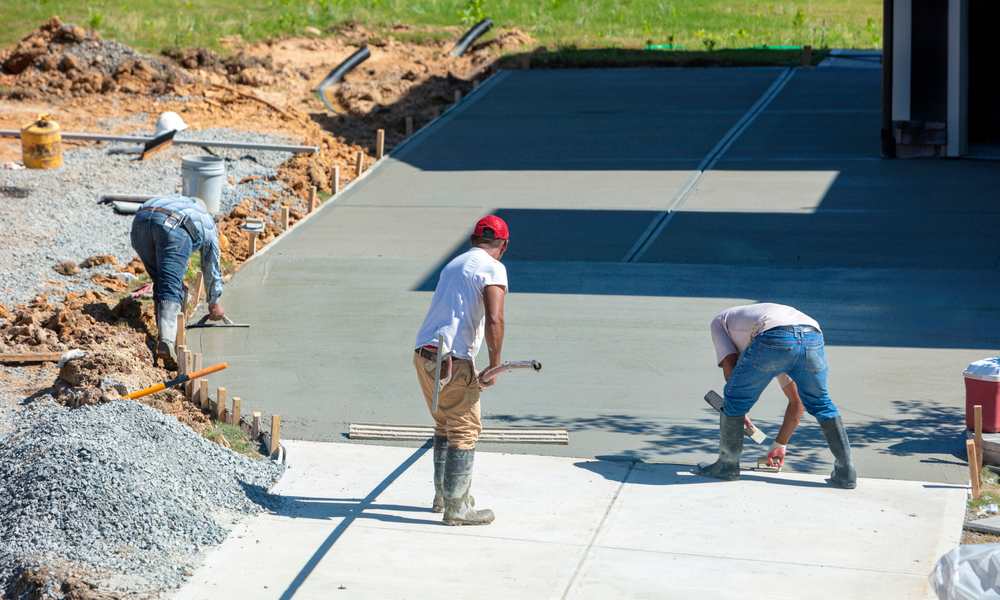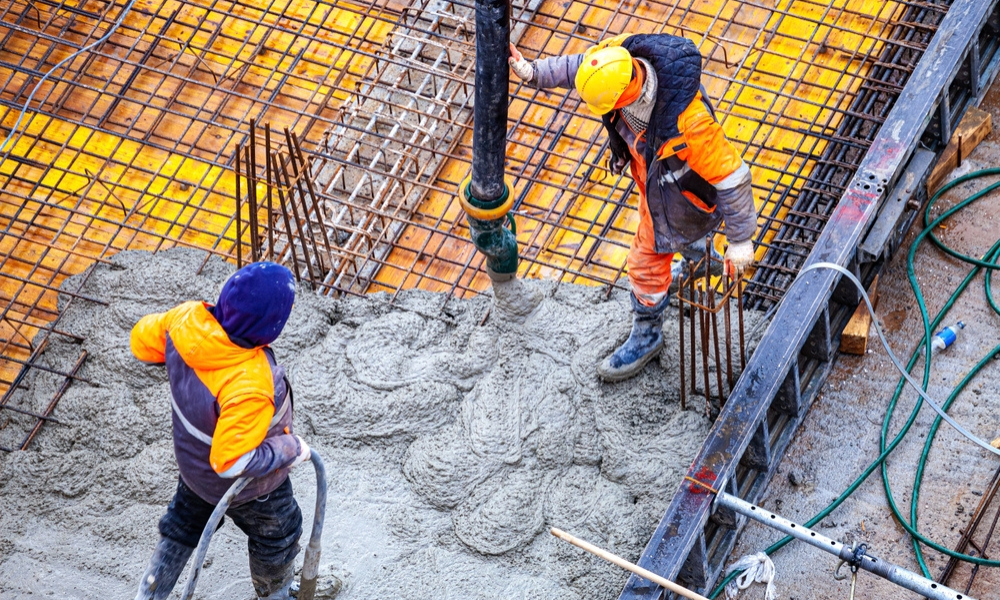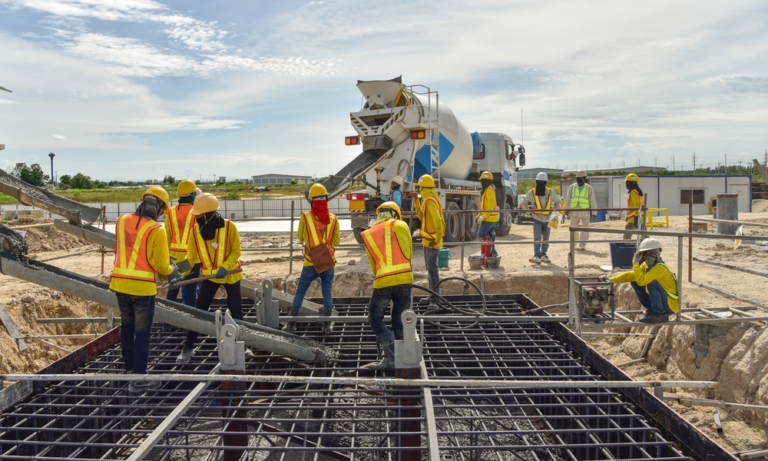Estimated reading time: 6 minutes
A home’s strength begins with its foundation—it’s the element that holds everything together. Without a reliable base, the entire structure can become compromised. For me, concrete is the go-to material when building solid foundations. It’s durable, versatile, and capable of withstanding both time and the elements. Let’s dive into why concrete is a superior choice for foundations, how to maintain it, and the warning signs that indicate potential issues.
What You’ll Learn in This Guide
- Why a durable foundation is essential for any home.
- The unique benefits of using concrete as a base.
- Common foundation designs and when to use each one.
- Signs of trouble that require attention.
- Practical tips for maintenance and repair.
Why a Strong Foundation Matters
Foundations don’t just hold up your home—they protect it. Here’s why they’re so vital:
1. Structural Stability
A well-built foundation ensures your home stays upright and level. By evenly distributing the weight of the structure, the base prevents issues like sinking, tilting, or uneven floors.
2. Defense Against Environmental Forces
Whether it’s shifting soil, heavy rainfall, or frost, a strong base shields your home from the impact of natural forces. Concrete foundations, in particular, are excellent at resisting these challenges.
3. Longevity
With proper care, concrete bases can last for decades, making them an investment that pays off in the long run. Homes built on well-maintained foundations are also less prone to costly repairs.
Advantages of Concrete as a Foundation Material

Why is concrete such a popular choice? It has several advantages that make it ideal for residential construction:
Durability: Concrete withstands moisture, temperature changes, and heavy loads better than many other materials.
Moisture Resistance: When properly sealed, concrete prevents water from seeping in, which helps avoid mold and structural damage.
Energy Efficiency: Insulated concrete helps regulate indoor temperatures, reducing heating and cooling costs.
Adaptability: Concrete foundations work in various soil conditions and can be designed to suit different climates and terrains.
Common Types of Concrete Foundations
Different homes require different foundation styles. Here are the most common designs:
1. Slab-on-Grade
This type involves a single, thick layer of concrete poured directly onto the ground. It’s ideal for areas with mild climates where frost is not a concern. Slab-on-grade foundations are cost-effective and quick to install.
2. Crawl Space Foundations
Crawl spaces elevate the home above ground, creating a gap for ventilation and access to utilities. These are perfect for areas prone to moderate flooding or damp conditions.
3. Basement Foundations
A basement not only provides a sturdy base but also adds usable living or storage space. These deep foundations are excellent for colder climates where frost protection is needed.
4. Pier and Pile Foundations
These designs rely on deep vertical supports to transfer the building’s weight to stable soil or bedrock. They’re commonly used in areas with poor soil conditions or high water tables.
Signs of Foundation Issues
No homeowner wants to deal with foundation problems, but catching them early can save a lot of time and money. Look out for:
- Cracks in Walls or Floors: Small cracks may seem minor, but they can allow moisture in and worsen over time.
- Uneven Floors: If your floors slope or sag, the foundation may be settling unevenly.
- Sticking Doors and Windows: When the base shifts, it can warp door and window frames.
- Water Pooling Around the Home: Poor drainage can weaken the foundation over time.
If you notice any of these signs, don’t ignore them. Small issues can escalate quickly, compromising the safety of your home.
How to Maintain a Concrete Foundation

Concrete is tough, but it’s not completely maintenance-free. Here are a few tips I follow to keep foundations in excellent shape:
1. Regular Inspections
Walk around your home and inspect the foundation at least once a year. Look for cracks, signs of moisture, or any shifts in the structure.
2. Manage Drainage
Proper water management is key. Ensure gutters, downspouts, and the surrounding landscape direct water away from the foundation. Excess water can erode soil and create pressure on the base.
3. Seal the Surface
Sealing the foundation prevents moisture from seeping in. Apply a high-quality sealant every few years, especially in areas with heavy rainfall or freeze-thaw cycles.
4. Fill Cracks Quickly
Don’t let small cracks grow into big problems. Use a crack filler or epoxy to seal them before they worsen. For larger cracks, consult a professional.
5. Avoid Heavy Loads Near the Foundation
Limit the weight of items stored near the foundation, such as large planters or heavy equipment, to reduce stress on the structure.
Dealing with Challenging Soil Conditions
The type of soil beneath your home can have a significant impact on your foundation’s performance. Here’s how to handle tricky situations:
Expansive Soil: This type expands when wet and contracts when dry, causing the foundation to shift. Deep foundations like piers can help bypass unstable layers.
High Water Tables: In flood-prone areas, elevated foundations or proper drainage systems are crucial.
Erosion-Prone Areas: Reinforce the foundation with retaining walls or extra grading to prevent soil from washing away.
FAQs About Concrete Foundations
1. How long does a concrete foundation last?
With proper maintenance, a concrete foundation can easily last 50–100 years.
2. Can small cracks be repaired?
Yes, small cracks can be filled with concrete filler or epoxy. However, deeper cracks may require professional attention.
3. What’s the best way to prevent water damage?
Good drainage is key. Ensure water flows away from the foundation using sloped grading, gutters, and downspouts.
4. How often should I inspect my foundation?
Conduct a visual inspection annually and after major weather events like heavy rain or earthquakes.
Final Thoughts
A concrete foundation is more than just a slab of material—it’s the backbone of your home. By investing in a high-quality foundation and maintaining it with regular care, you’re ensuring the safety and longevity of your property.
If you notice any signs of foundation trouble or need help with maintenance, don’t hesitate to reach out to a professional. With the right approach, your foundation will stand strong for decades, providing a safe and stable home for you and your family.



